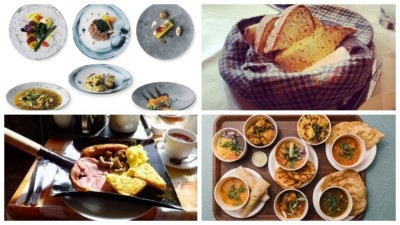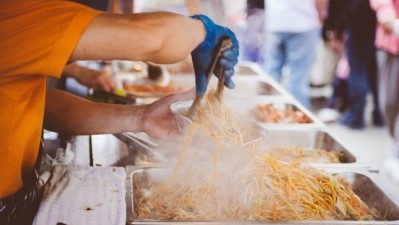Summer BBQ boom: capitalise on the flavour trends

Pub gardens are the place to be when the sun is shining and what better way to make the most of this than rolling out the barbecue to satisfy the needs of the outdoor diner.
‘Barbecue’ can be used in a variety of ways, covering meat dishes as well as the more creative. For this reason, it is a category on the up, according to data from The Morning Advertiser’s sister title MCA.
MCA executive director Simon Stenning says: “From the MCA menu tracker, barbecue is the most popular flavour on menus, with chicken being the meat used in more than 50% of barbecue dishes. Barbecue pulled pork has also been a dish on a significant number of menus.
“We have identified barbecue as a significant growth cuisine, falling into the ‘hot’ trend category, and from our survey of senior executives across the industry, barbecue was identified as the second fastest-growing cuisine trend for the next three to five years, beaten only by healthier eating.”
Trends from across the world are infiltrating every category of the food market and the barbecue sector is no exception.
Stenning adds: “But we are also seeing barbecue being used as a flavour or preparation style, right across the industry, with Italian and Spanish brands offering it on their menus; these have included Barbacoa Romana Pizza at PizzaExpress and Beef Brisket Bolognese at Ask Italian, taking a barbecue staple and mixing it with an Italian classic.
“Korean barbecue is also a prominent and growing, international version, but there are many international variations such as from Turkey, Greece, or Middle Eastern cuisines.
“Examples include Olle – a Korean barbecue restaurant where you grill your own meats. Others are Black Axe Mangal – a Turkish grill/kebab restaurant; Suvlaki –a Greek restaurant, cooking on a robata-style grill over charcoal.
“These might not be considered traditional barbecue restaurants, but they are providing consumers with the authentic grilled meat flavour, possibly appealing to slightly healthier and more interesting consumer demands.
“The traditional American barbecue restaurants such as Bodean’s, Big Easy, MEATliquor and Red’s True BBQ are all doing well, providing a real experience through cooking and serving authentic foods.”
Street food
Barbecue food is a large category, covering a plethora of operators and flavours, meaning it is important for pubs to make it their own. Street food vendor Low ’n’ Slow produces brisket, ribs, sausage and barbacoa food.
Owner Andy Stubbs says: “For me, it’s not so much about following trends as such, but putting your own take on things.
“The barbecue chefs I admire are all about sourcing high welfare, British meat from animals that lead happy and natural lives, and working with small farms or producers.
“It’s about seasonality and using what produce we have in our country rather than following generic American staples. Yes, be inspired by the amazing barbecue the US has given us but, remember, they use what they do because they have it where they are. We can do the same and use them as inspiration.”
However, Stubbs says the heritage of the street-food market is something operators need to take into account.
He adds: “Street food isn’t a type of food as such. It originated from poverty-stricken countries where it was the only way people could eat or work.
“What we know as ‘street food’ is a very modernised version of this, which often isn’t budget food. Using the phrase ‘street food’ will not make something trendy or good. [Operators] need to create street-inspired dishes and pay homage to where they came from.
“This will give a great honest product that doesn’t reek of bandwagon jumping.”
Cooking methods can trigger feelings and emotions in diners, giving operators something to tap into when considering a barbecue offer, Stubbs says.
He adds: “Barbecue food has so many opportunities. It is not sausage and burgers ruined by your uncle drinking beer in the backyard. There are so many styles and methods to barbecue.
“Cooking over fire brings back memories and reminds people of happy, good times. It creates smells and aromas unlike any other method of cooking and has such incredible depth of flavour.
“When done right, using the right equipment, fuel and produce, it is something everyone will enjoy and be familiar with.”
Suppliers
Renting the barbecue itself can be a cost-effective option. However, in the long-term, buying one can pay dividends.
Cinders Barbecues general manager Mark Challinor says: “Renting a commercial barbecue from a local party hire company allows operators to try a few outdoor events without too much cost, however, investing in your own barbecue means you can take advantage of any unexpected good weather.
“A barbecue is not just for summer. Operators can host family events at their pub all-year round and involve local communities at gala events, Halloween, bonfire night and Christmas.”
However, operators need to remember that, regardless of hire or purchase, the machine itself needs to be of a high standard.
Challinor adds: “Whatever equipment you choose, ensure it is commercial and comes with a good warranty.
“There is a debate between natural gas or propane barbecues and charcoal. A decent gas barbecue gets up to cooking temperature in less than 10 minutes and maintains cooking speed up to the point when you switch if off.
“A charcoal unit needs a minimum of 30 minutes, during which time, there will be black smoke until it settles down to a grey ash appearance. The heat will gradually decay until more charcoal is needed and having stand-by trays of fuel at different stages of burn will be the answer to consistent cooking. Unless you are a charcoal champion, ease the operation by choosing gas.
“Natural gas is cheaper than propane but comes with a huge problem – it is a fixed position operation. This is great if you want a kitchen chargrill under an all-weather structure, but consider the initial cost plus the ongoing costs of maintaining this set-up.
“There is also a power difference between the two fuels so it is a case of weighing up all your options.”
Operators need to work out the costs of the different fuel options because this can impact the bottom line.
Challinor says: “It is good policy to look at the most convenient option of propane and modify your plans if the cost is a problem. However, the sums tend to stack up in its favour.
“It’s time to get out the calculator because propane is sold by weight and a 19kg cylinder (about waist height) will power a higher capacity 20kW catering barbecue for 12 hours at about £2.50 an hour.
“Choosing an appliance with at least two separate grilling areas cuts this to £1.25 per hour as your turn one area off for one-off events and parties.”
When it comes to keeping things clean, Challinor has some top tips for chefs and pub staff to ensure hygiene is not a problem on the barbecue.
He says: “Stainless steel will always be the more hygienic option, particularly for an outdoor appliance that will be stored in an outbuilding.
“In either case, the rule is to thoroughly clean the barbecue and especially the cooking grill immediately as the event closes.
“Speed and convenience at this point is important in terms of staff time and enthusiasm, and it is worth considering a unit that self-cleans because it is allowed to run on for a few minutes.
“A final cleaning with soapy water may be necessary but the drudgery of the steel brush is removed.”
However, there are other options for operators aside from open barbecues. Challinor adds: “The one accessory that will ease cooking and serving is a solid griddle. It enhances the self-clean by increasing heat below while presenting food additions like mounds of fried onions or mixed vegetables.
“Griddles are slower than open barbecues and there is less taste to what you are cooking, but they can always be lifted off when the pressure of a queue is on.
“A good cleaning regime is even more necessary for outdoor equipment than for indoor kitchen equipment.
“This is because of the environment in which they operate and the conditions they are likely to be stored in.
“All commercial barbecues come with the recommendation to store in a clean and hygienic area, but it will not be as controlled as your kitchen so take this into account.”






